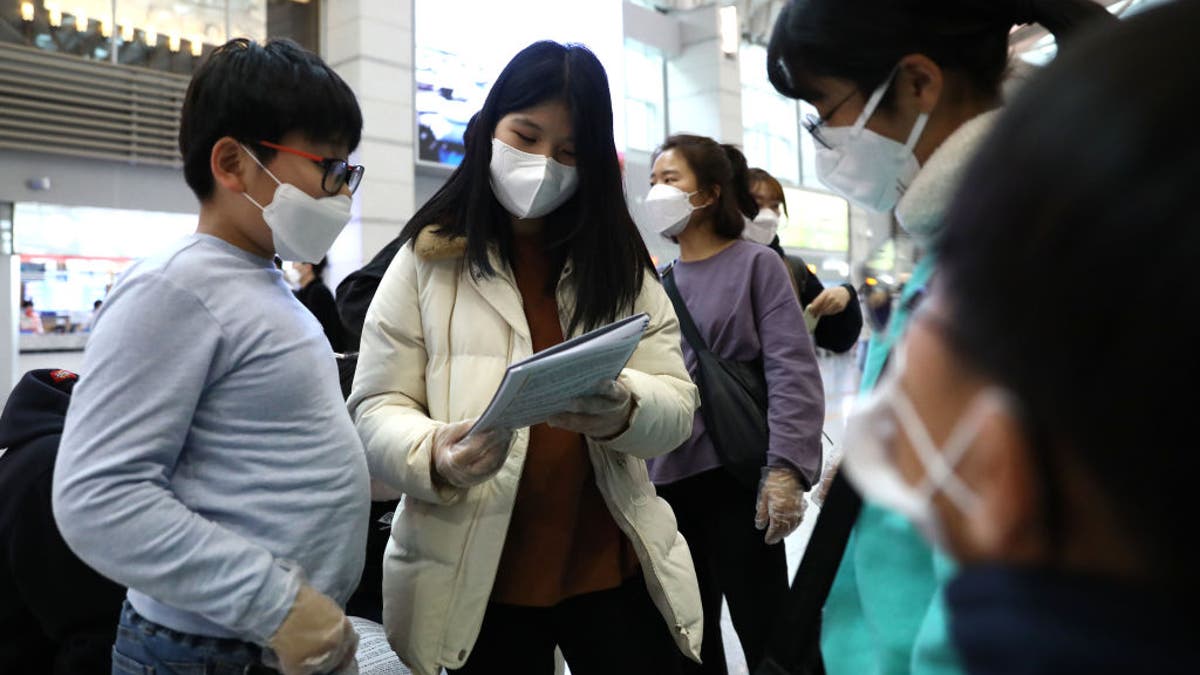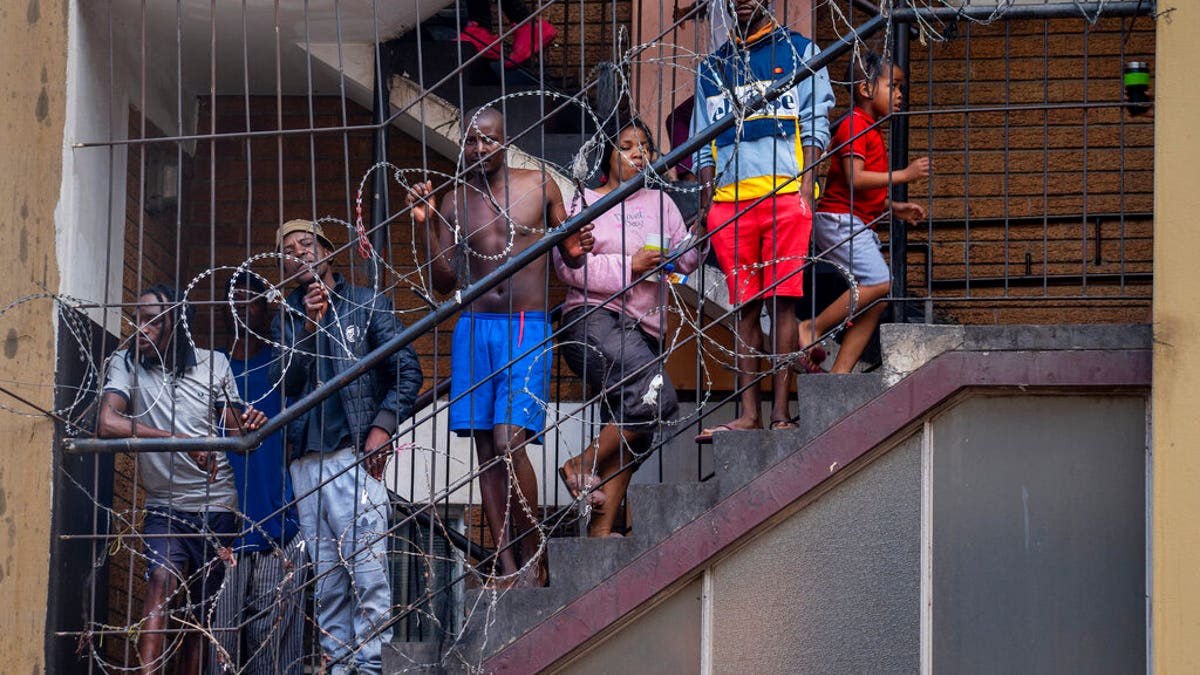Doctors warn coronavirus symptoms could include loss of smell, taste
Dr. James Denneny, Executive Vice President and CEO American Academy of Otolaryngology joins ‘Amereica’s Newsroom.’
Get all the latest news on coronavirus and more delivered daily to your inbox. Sign up here.
When the coronavirus first started to spread from its origins in China earlier this year, the widely preached consensus was that it did not infect – or at least did not gravely harm – children and young adults. However, public health professionals are now raising the alarm that such information provided a dangerously false sense of security and invincibility.
"It is a misconception that children can't get critically ill. Children are getting sick, but they're not getting as severe cases," Dr. John Whyte, Chief Medical Officer at WebMD, told Fox News. "The highest rate of severe cases and deaths remains the elderly. But what we are learning is that everyone is at risk."
A study released this week by the Centers for Disease Control and Prevention (CDC) concluded that of the 4,226 coronavirus – officially termed COVID-19 – cases reported in the United States as of March 16, 29 percent were of those in the 20 to 44 age range. And in New York City, now the international epicenter of the pathogen, around half the confirmed infections were of individuals aged between 18 and 44.
CORONAVIRUS TAKES DRASTIC TOLL ON HEALTH-CARE PROVIDERS ACROSS UNITED STATES
CDC data from last week shows an average of 39 percent of hospitalizations nationwide involve patients under the age of 55. Almost of the 121 patients who were admitted to intensive care units were adults under 65, according to the CDC's findings.
In the initial weeks of the outbreak, the World Health Organization (WHO) reported that a mere fragment – some 0.2 percent – of those under 19 developed critical symptoms. The report also noted that 2.5 percent had "severe" symptoms. That data, analysts now say, was perceived by many to believe that the young were somehow immune to the new disease.
Indeed, everyone is at risk.
Despite the initial broad belief that young people would not get gravely ill from coronavirus, and likely not require hospitalization, medical experts now contend that as we all learn more about the unique contagion, that is far from fact.
"The initial data from Wuhan, China, indicated that the majority of people who were hospitalized and/or required ICU admission, sometimes then later resulting in fatalities due to coronavirus, were those who are older – over the age of 65, especially over 85," said Dr. Roger McIntyre, president, and CEO of CRTCE, professor of psychiatry and pharmacology at the University of Toronto and head of the Mood Disorders Psychopharmacology Unit at the University Health Network. "But it appears as though new data from the CDC shows one in five individuals hospitalized due to COVID-19 are aged 20 to 44. Moreover, about 12 percent of intensive care unit admissions are people 20 to 44."

South Korean teenagers wearing masks at the Incheon International Airport on January 27, 2020, in Incheon, South Korea. (Chung Sung-Jun/Getty Images)
Officials are also now poking holes in the theory that even among younger demographics, that it is only those with inherent medical woes who are perilously impacted as those deemed to be in top physical condition are also being hit hard.
In Brooklyn this week, a 36-year-old school principal died as a result of complications stemming from the coronavirus. One person who knew the victim told Fox News that they were not aware of any previous health problems.
While details remain murky, it is believed that a teenager in Los Angeles last weekend may have grimly become the first person in the U.S. under 18 to have been killed by the coronavirus. Furthermore, a 12-year-old girl in Atlanta was placed on a ventilator and on the brink of death, having developed coronavirus-induced pneumonia. She was not known to have any underlying medical issues, family members have publicly stated.
In Nashville, a once healthy 21-year-old female – who admitted to making a mockery of social distancing guidelines – is now documenting her own painful coronavirus symptoms and warning others to take the virus very seriously.
Cameron van der Burgh, 31, an Olympic gold-medalist swimmer from South Africa, referred to his own battle with the virus as the most pain-staking ailment he has ever fought.
"Although the most severe symptoms (extreme fever) have eased, I am still struggling with serious fatigue and a residual cough that I can't shake. Any physical activity like walking leaves me exhausted for hours," he wrote on Twitter. "By far the worst virus I have ever endured despite being a healthy individual with strong lungs (no smoking/sport), living a healthy lifestyle, and being young (least at-risk demographic)… Please, look after yourself everyone! Health comes first — COVID-19 is no joke!"
Local and state governments are also expressing exasperation at rising infections among the young. In Philadelphia, Health Commissioner Thomas Farley stated this week that 175 of Philadelphia's 342 confirmed cases are in people under 40, meaning that more than 51 percent of cases were young adults.
State health officials in California last week reported that 42 percent of the state's cases of coronavirus are between ages 18 to 49, and pinned the median age of infections to 47.

Residents of the densely populated Hillbrow neighborhood of downtown Johannesburg, confined in an attempt to prevent the spread coronavirus, stand on a staircase. (AP Photo/Jerome Delay)
However, the absence of across-the-board testing across the country has made it challenging to determine thus far exactly how susceptible children and youth are to the virus, and how severely it may impact their health. The CDC has yet to publicly document the median age of coronavirus cases in the U.S. The agency has also not yet specified which of the younger cases had prior medical problems that may have exacerbated their symptoms.
Epidemiologists and infectious disease experts still broadly assume that young people generally experience relatively benign cases of coronavirus than older people, making them silent – yet potentially lethal – transmitters.
Even though the number of hospitalizations has seemingly skewed younger as the virus unravels nationwide, CDC data still shows that older people have a higher chance of dying from it. As it stands, roughly 80 percent of fatalities are those over the age of 65.
CORONAVIRUS CRIMINALS: AUTHORITIES WAGE WAR AGAINST VIRUS SCAMMERS, THIEVES, IMPOSTORS AND IDIOTS
Another implication is that, even if young adults are not dying at the same rate as their elderly counterparts, the high numbers of hospitalization cases also means that fewer resources and beds for those in the older demographics, leading to more deaths.
The misleading notion of young people being virtually resistant to severe symptoms meant that many failed to change their lifestyles and at least initially engage in social distancing measures to curb the spread. Scores continued to travel and group together in Florida for spring break and in states like Kentucky, youth held "coronavirus parties" only days later to learn that attendees were then falling sick from the disease.
According to Whyte, increased risk in younger age groups appears similar to that for adults.
"It's those young people who have chronic diseases such as diabetes, cancer, or respiratory conditions. Of note, asthma is not believed to increase risk," he explained.

Cece Guida, 19, top, of New York City, pushes on Sam Reddick, 20, of Evansville, Ind., as spring break revelers look on during a game of chicken fight on the beach in Pompano Beach, Fla. (AP Photo/Julio Cortez)
Children below the age of 10 make up the lowest numbers of critical cases but are still coming down with concerning symptoms.
A two-month-old child has tested positive for coronavirus in Nashville. Florida health officials on Tuesday also confirmed that a baby boy below 1-year-old, along with a 2-year-old girl, have contracted coronavirus. A three-week-old infant in New York has, in addition, tested positive.
But officials believe this may only be the tip of the iceberg when it comes to very young incidences of the disease.
On a global scale, more and more young people are also coming down with acute symptoms. In Spain, hospital data shows around 18 percent are below 50, and in South Korea, more than half the patients are under 50 – with the vast majority of those taking up hospital beds between the ages of 20 and 29.
In the United Kingdom, an 18-year-old with a pre-existing health condition is reported to have died from the disease.
A case study on the outbreak in China, which was published earlier this month in the Pediatrics online medical journal, underscored that the majority of coronavirus cases in kids appear to be mild, but infants under 12 months old face the greatest danger in ascertaining life-threatening maladies. Of the 125 children in the China study who became "severely or critically ill," some 76 were aged 5 or below. Forty were infants less than a year old.
For much of the medical community, the sudden onset of a virus never before seen has left many medical researchers flying blind, with only pieces of the puzzle now beginning to come together.
On Friday afternoon, the global death toll for coronavirus surpassed 25,000. In the United States, there are more than 92,200 verified cases, and the illness has already claimed the lives of more than 1,300 people – a figure that is ascending by the hour.
CLICK HERE FOR COMPLETE CORONAVIRUS COVERAGE
But given the newness of the virus that – up until a few weeks ago, most around the world had never even heard of – there is a lot left to be determined.
"We don't know exactly why youth don't seem to be impacted as much. There's some belief that since they are exposed to several different coronaviruses, they may develop some immunity," Whyte surmised. "They may also simply be developing more mild cases. Also, young people typically don't have heart disease or lung disease, which we know puts people at increased risk. So many do have a false sense of security, which then may lead them to not follow the current guidelines around social distancing."

